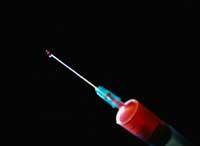Bittersweet gene therapy
The researchers were in the milk meat. But one of the two brothers dies and they don't know why.

The essence of gene therapy is relatively simple: replace the defective gene at the base of the disease with a healthy gene. However, the practice of this treatment is much more complicated. And once finished, it is not easy to control all the side effects.
Everything suggests that with gene therapy they managed to cure these two brothers and, after two years of normal life, the internal organs of one of them stopped working.
Treatment in genes
The disease of these two brothers has its origin in cells of the spinal cord, precursor of blood cells (stem cells), from which the cells of the immune system develop. They replaced the mutated or defective gene in the stem cells of the spinal cord. In fact, the defective gene is found in all the cells of the body, in the DNA of all the cells, but since the disease is located in the spinal cord, it is enough to replace the cells of that area.

Thus, patients were removed from various stem cells of the spinal cord and subsequently treated to kill the rest of the stem cells (chemotherapy). At the same time, in the laboratory, the extracted stem cells were subjected to a healthy gene and, once again, were introduced into the body of the sick (about three hundred million cells) to take their place in the spinal cord.
This allowed the prevalence of healthy stem cells that created healthy immune system cells, so patients were cured.
With the help of the virus
Thus exposed it seems simple, but the greatest difficulty is in the intermediate step, when inserting the healthy gene of the stem cell. They use a medium: a vector. And the key to the success of this therapy is the improvements introduced in the vector.
The vector used is common in gene therapy, it is a retrovirus. That is, a modified retrovirus has been the means to introduce a healthy gene into patients' stem cells. Retrovirus integrates the gene into the stem cell's DNA. But one of the major difficulties of therapy is the convenience of including this gene in its more or less appropriate place. In fact, when this therapy has been applied so far, failure has come that way.

Recently, ten bubble children had tried a very similar treatment in Paris (affected by the immune system by a mutated gene). Unfortunately, one of the children died and two children developed leukemia. Leukemia was caused by the gene itself introduced, as it was located not only in the right place but also in other places.
In the case of the two brothers, they wanted to avoid the risk of leukemia throughout the process. And the doctors were following them continuously. But this time it has not been leukemia that has led one of the patients to death. Therefore, doctors now seek the cause of death.
Published in 7K.
Buletina
Bidali zure helbide elektronikoa eta jaso asteroko buletina zure sarrera-ontzian











